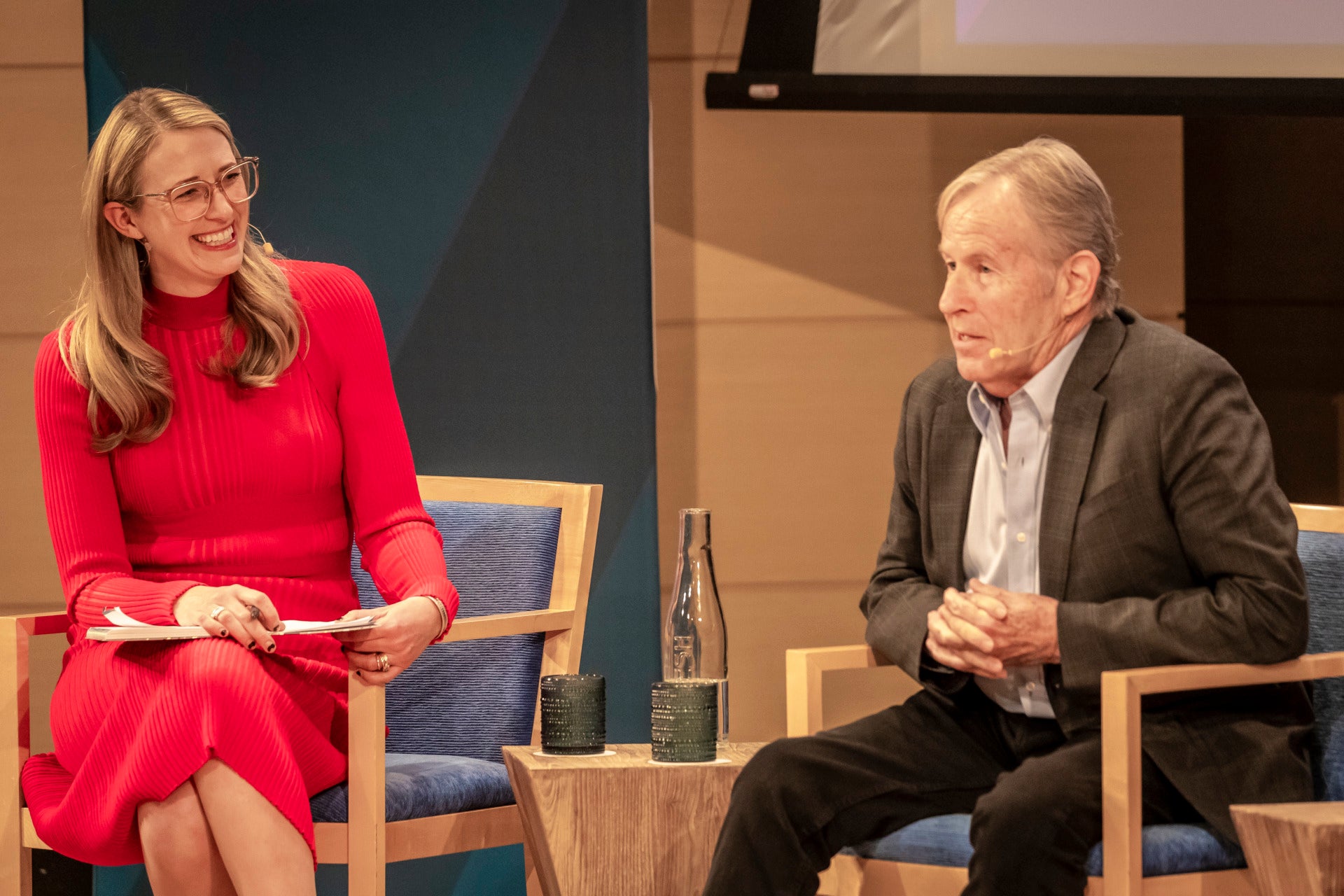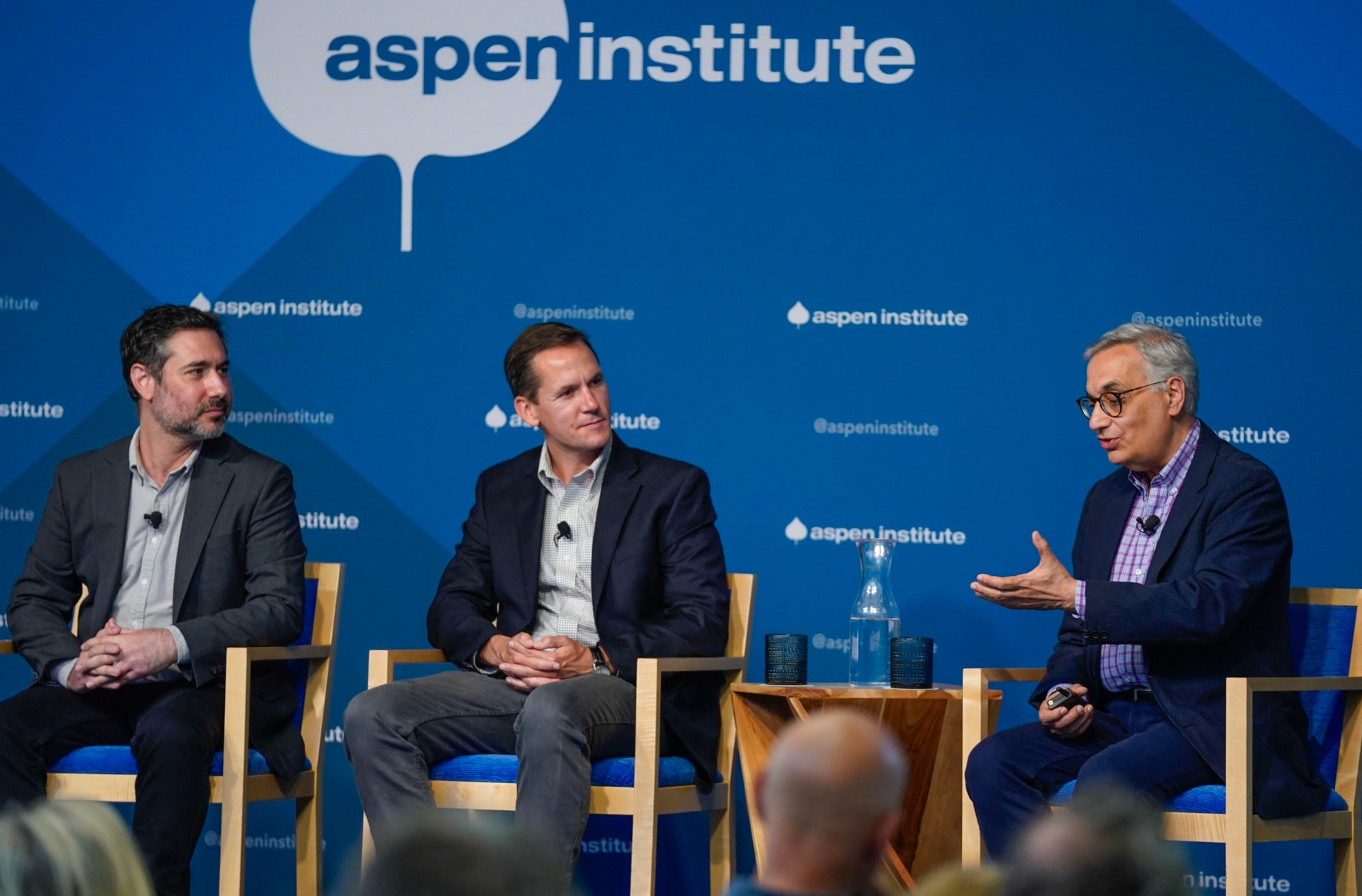“Beauty is a great way to connect. When you see a painting or a performance that is beauty, you find yourself opening up,” Dutch composer Merlijn Twaalfhoven said at Thursday’s Arts panel “Culture and Conflict.”
Twaalfhoven joined ballroom dancer-turned-legendary instructor Pierre Dulaine in a discussion moderated by Institute Arts Program Director Damian Woetzel. Dulaine and Twaalfhoven shared an intense belief in the transformative power of music and dance in overcoming national, political, and religious boundaries.
One of Twaalfhoven’s recent projects involved a group of musicians from Ramallah and Bethlehem, as well as children from Palestinian West Bank refugee camps, performing on scattered rooftops bridging the Separation Wall in Bethlehem. “It made a huge impact on the way people experience division. People were seduced to come closer and hear the sounds of the other side. The worst thing you can do is to build a wall and put up fences,” Twaalfhoven said.
Dulaine discussed the upcoming film Dancing in Jaffa, a documentary which follows Dulaine to his birthplace in Palestine to pursue his dream of pairing young Israeli and Palestinian children as partners in ballroom dance. Dulaine was inspired by the hope that the universal values which dancing in partners teaches, such as honor and respect, can trump learned conceptions of the “other” based on gender, religion and nationality.
Dulaine recounted the memory of one Palestinian boy who, when paired with an Israeli girl, asked him “When I’m looking at her in the eyes, what happens if I fall in love?”
“It’s giving them a choice,” Dulaine went on, “and it’s a place of honor. You say ‘thank you,’ you bow and curtsy, and you escort her off the floor. These are life skills: confidence, the ability to look into the others’ eyes. When you touch someone physically, something happens. You think, my god, this person is breathing in the same way I am! You become a human being.”
Twaalfhoven agreed: “When children experience something in a physical way, it’s so much different from learning a theory.”

